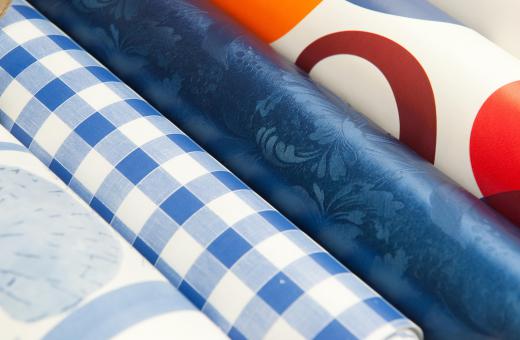The gravure printing process is a modern type of automated intaglio procedure used to print commercial materials such as wrapping paper, magazines, greeting cards, catalogs, ad inserts for newspapers, and food packaging. Typically, a gravure press comprises several smaller units for each color in the printing process: magenta, black, cyan, and yellow. Each unit contains a rubber-coated impression cylinder as well as the gravure cylinder that is pre-engraved with an image, with areas of deeper engraving producing more intense colors in the final product. A gravure cylinder is rotated in an ink bath, with the excessive amounts of ink being wiped away using a flexible squeegee-type blade. The remaining ink is then immediately transferred directly onto the surface to be printed, using the force of the impression cylinder.
Inks that are used in the gravure printing process are low viscosity and extremely fluid. The printed substrate must be passed through an electric or gas-fired drier between each application of separate colors. This is necessary so that the previously printed layers will not smudge or smear when the next layer is applied.

Also known as rotogravure, the gravure printing process is typically used for high-volume or long-running printing jobs. This type of press is generally custom-made for specific product applications. The gravure cylinder is often made of copper-plated steel with a coating that is sensitive to light. Historically, the cylinders were chemically etched or engraved with a diamond-quality stylus; in modern times, they are mostly engraved using lasers. While significantly more expensive than other types of printing processes, gravure cylinders are known for their ability to produce a high quantity of impressions without showing significant image degradation.
Although sheet-fed gravure presses are occasionally used for special jobs, it is more common for the gravure printing process to involve webs or rolls of paper or other substrates. A sheet-fed press is likely to be used when reproducing high-quality photography or other visual art. Either type of gravure printing process consistently delivers a broad range of density that translates into details of light and shadow in the printed image.
Gravure printing has long been used to print photographs in newspapers. Between 1930 and 1970, it was customary for newspapers to print separate Sunday sections featuring rotogravure photographs with captions. A 1932 Gallup survey determined that the rotogravures or "rotos," as they were sometimes known, attracted a wider audience than other newspaper sections, making these sections highly desirable to advertisers.
